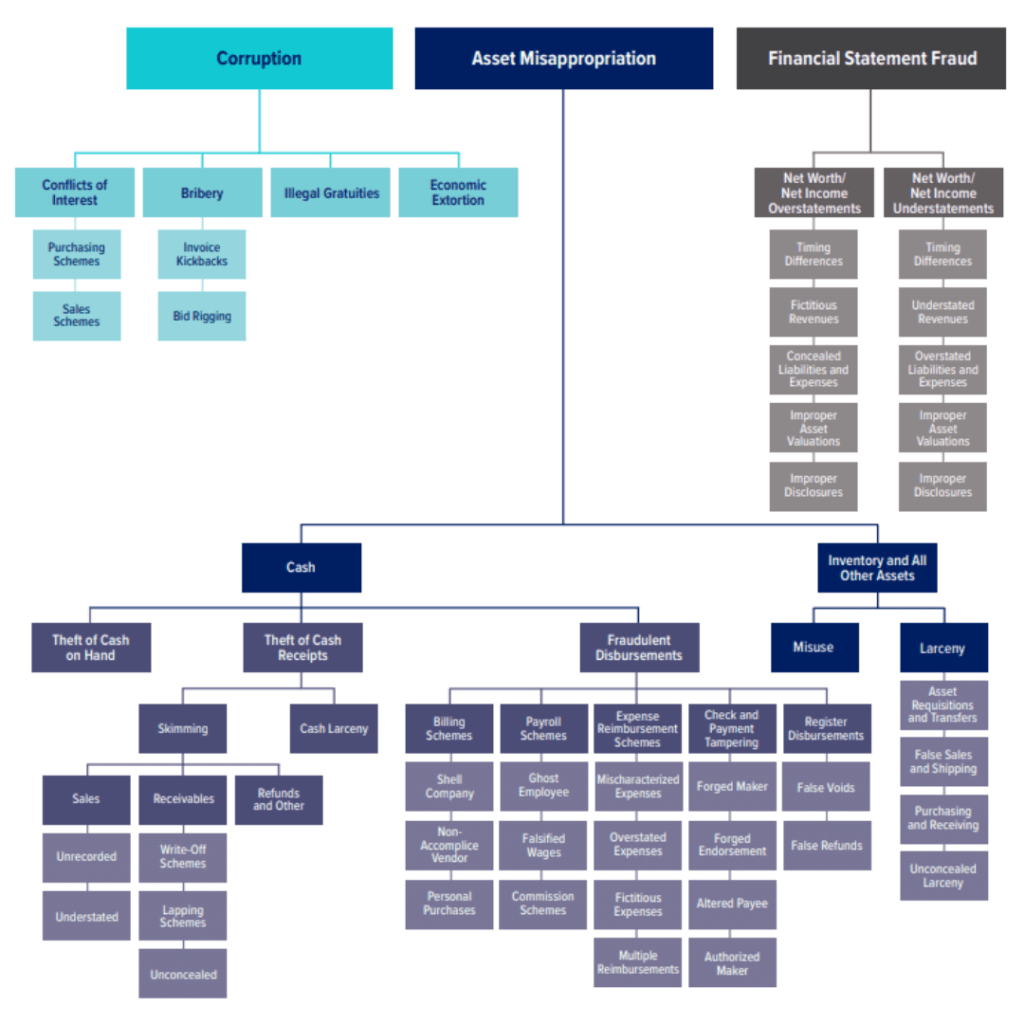Workplace Woes: Employee Theft Statistics

Has your business fallen victim to employee theft? Without knowing you, your industry, or your staff, it’s safe to assume that the answer is probably “yes.”
Why? Because theft in the workplace is surprisingly common. And the culprit, more often than you’d like, is an employee.
In fact, it happens at roughly 95% of businesses both large and small (although small businesses seem to be slightly more susceptible). Up to 75% of employees admit to stealing from an employer at least once in their lifetime—and 37.5% have done it at least twice—according to Statistic Brain. And more than half of fraud cases (57%) are employee-related.
Those are big numbers. And that’s just the beginning of employee theft statistics you need to know. Protect your business by learning all about theft in the workplace and how you can prevent it.
Types of Employee Theft
When it comes to your employees stealing from their employer, there are several common types, including:
- Time Theft: Billing for more hours than actually worked, wasting time at work, coming in late, leaving early, clocking in for a friend, extended breaks
- Data Theft: Using personal information, financial records, credentials, sensitive or confidential information inappropriately
- Skimming: Removing a portion of cash receipts, or pocketing amounts of cash, for personal use
- Embezzling: Taking money that is in the business’s care—as an accountant, payroll supervisor, financial planner, or similar role
- Inventory Theft: Stealing office supplies, equipment, food items in the shared break room, or retail or wholesale products for sale
- Intellectual Theft: Appropriating company secrets, client portfolios, proprietary processes, techniques, or recipes
There are others, of course. And each type may have several subtypes within it.
For example, skimming includes both under ringing (charging a customer for three items but only ringing up two at the register) and short ringing (charging full price for an item but ringing it up as a less expensive option and pocketing the difference). “Sweethearting”—employees using their staff discount for friends and family—costs businesses roughly $100 billion each year. Finally, straight-out theft—aka blunt theft—involves an employee simply walking away with large amounts of cash from the register or safe, often never to be seen again.
Employees can steal cash, information, time, secrets, and things. Or, in other words, virtually everything.
And before you dismiss time theft as inconsequential, consider this: 75% of American businesses suffer from it, and it can cost them up to 7% of their gross payroll. An annual payroll of $500,000, for example, may see a time theft loss of up to $35,000.
As a side note, make sure your business isn’t committing wage theft, inadvertently or otherwise. This crime is shockingly widespread and builds ill will among your workforce. Pay your employees for all of their time, including any overtime pay they’ve earned, and don’t work them off the clock.
Real-Life Employee Theft Examples
Shoplifters, armed robbers, and burglars are constant external threats, and you should take proactive steps to stop them. But it is often those closest to us whom we trust the most that cause the most damage. Workplace theft can quickly add up to huge losses if you’re not careful.
Max Agrad knows this first-hand. His three-employee start-up lost over $37,000 from a former employee billing for 5x what contractors were actually being paid. And he thinks he got off lucky.
A bookkeeper stole $350,000 from an independent bookstore in North Carolina. An IKEA employee swiped $400,000 in customer refunds. And David Smith embezzled $1.2 million in false expenses from Quest Diagnostics.
Employee theft is big business. But just how big?
Industries Most at Risk
Employee theft occurs in every industry, but some see it much more frequently than others. According to the Association of Certified Fraud Examiners (ACFE), the top ten industries for workplace theft in 2022 are:
- Banking and Financial Services (median loss of $100,000)
- Government and Public Administration (median loss of $150,000)
- Manufacturing (median loss of $177,000)
- Healthcare (median loss of $100,000)
- Energy (median loss of $100,000)
- Retail (median loss of $65,000)
- Insurance (median loss of $130,000)
- Technology (median loss of $150,000)
- Transportation and Warehousing (median loss of $250,000)
- Construction (median loss of $203,000)
It may be surprising to see retail so low on that list. The sheer amount of money and data involved in #1-5 explains why retail ranks lower.
According to the National Retail Security Survey, the average loss per shoplifting incident was $461.86 in 2020. But the average loss per employee theft incident was more than 3x higher at $1,551.66, and 42.7% of retail shrink is because of employees. That’s no small amount.
But that’s just the beginning of workplace crime.
What is Occupational Fraud?
Occupational fraud can last years and result in huge losses. The average loss is $1,783,000 per case, according to ACFE data. Occupational fraud falls under three major categories:
- Asset Misappropriation: Stealing company cash, products, or other resources
- Corruption: Bribery, extortion, kickbacks, conflicts of interest, and so forth
- Financial Statement Fraud: Intentional misstatement or omission in financial records
Asset misappropriation is by far the most common (86%) but causes the least damage, with a median loss of $100,000. Schemes include billing, check and payment tampering, cash larceny, noncash, expense reimbursement, and more. Financial statement fraud is the least common (9%), but with the highest median damage at $593,000. And corruption is present in about half of all cases, with a median loss of $150,000.
A case of employee fraud—regardless of type—lasts an average of 12 months and causes a loss of $8,300 per month.
The good news? Things appear to be trending down. When comparing occupational fraud statistics across all industries, cases in 2012 had a median duration of 18 months and caused a median loss of $140,000. In 2022, the medians were 12 months and $117,000, respectively.

Employee Theft Demographics
Any employee is a potential thief. That’s the sad reality. But the collected data provides a snapshot of the typical fraudster:
- Men are responsible for 73% of fraud cases
- The median age is 48
- Four departments—operations, accounting, sales, and executive/upper management—account for 45% of cases
- 34% of millennials believe that stealing from their employer is justifiable
- Full-time employees in their 20s and 30s are the primary perpetrators of insider fraud in finance and insurance
- Only 4-6% of perpetrators had a previous fraud conviction
- 57% of cases are committed by insiders or a combination of insiders and outsiders
- Employees with at least a bachelor’s degree caused a higher median loss ($195,000) than those without one ($100,000)
- 39% of occupational fraud cases were perpetrated by managers, 37% by staff-level employees, 23% by executives/owners, and 2% by others
And the higher up the fraudster is in the organization, the higher the median loss: $337,000 for executives, $125,000 for managers, and $50,000 for staff.
Methods of Concealment
Criminal employees are looking for low-risk scenarios with high rewards. And they’ll take steps to cover their tracks whenever necessary or possible. Consider:
- 39% create fraudulent physical documents
- 32% alter physical documents
- 28% create fraudulent digital documents
- 25% alter digital documents
- 23% destroy or hide physical documents
Knowing how dishonest employees attempt to hide their crimes should provide some insight into how to discover and catch them.
Remember, 30% of cases had an employee stealing for years—five years, on average—before getting caught. Don’t let that happen to you.
Methods of Detection
Depending on the industry and size of a business, discovering employee theft and fraud can be very difficult. The top five methods are:
- Tip: A tip from an employee, customer, vendor, or other individual accounts for 42% of discovered cases
- Internal audit: 16% of cases
- Management review: 12% of cases
- Document examination: 6% of cases
- By accident: Sheer luck brought 5% of cases to light
To that end, it’s beneficial for any business to establish confidential channels for tipsters and a robust, frequent process for auditing, reviewing, and examining both physical and digital documents.
Do that, and you’re better situated than most. Losses are 2x higher at organizations without tip hotlines. Those with established hotlines are more likely to detect fraud via a tip.
But crime is still going to happen. And if it does, it’s going to cost you.
The Cost of Employee Theft
Let’s start with the big one: ACFE estimates that organizations and businesses lose 5% of annual revenue to fraud. That amounts to $4.7 trillion worldwide in financial damage.
Basic employee theft—if we can call it that—costs American businesses roughly $50 billion each year. That’s about $137 million per day. It’s estimated that businesses lose 20% of every dollar to workplace theft and fraud.
And if that’s not bad enough, it’s believed that 30% of bankruptcies directly result from employee theft.
But you’re not powerless.
Anti-Fraud and Theft Controls
Tipster channels—whether a phone number, email address, dedicated department, or something else—are your best bet. Combining a whistleblower policy with employee training in fraud awareness is even more effective. Additionally, you should consider at least some of the following measures:
- External audits
- Employee code of conduct
- Internal audits
- Anti-fraud policy
- Employee support programs
- Fraud risk assessments
- Rewards for tipsters
- Surprise audits
Having these methods in place can save tens or hundreds of thousands of dollars per incident. A hotline, for example, reduces the median loss from fraud by 50%. Same for surprise audits. An anti-fraud policy? 45% reduction. Code of conduct? 40%. A dedicated fraud department can reduce the median loss by one-third.
Unsurprisingly, the most common weakness for employees and mid-level managers in fraud prevention is a lack of internal controls.
Preparing for fraud and theft has nothing to do with trust and everything to do with the reality of doing business. Save time. Save money.
Deep Sentinel Can Help After Hours
Business security cameras are a powerful deterrent. And surveillance cameras with live security guards can prevent crime before it happens, intervene while it’s happening, and provide a valuable record of it afterward.
Deep Sentinel provides next-gen security cameras with proactive professional video monitoring, the shortest response time in the industry at 30 seconds or less from camera activation to police notification, and a zero false alarms guarantee.
Protect your business from employee theft with anti-fraud measures during the day and Deep Sentinel outside of regular business hours.
Not only can Deep Sentinel guards prevent vandalism, loitering, theft, and break-ins, but they can also engage with employees (or anyone else) via 2-way audio and real-time video after hours. That way, no one takes advantage of an empty office, store, warehouse, manufacturing floor, or wherever else you conduct your business. They’ll know someone is watching.
Because workplace security must protect against both external and internal threats. And Deep Sentinel can help with both.
Need a Solution that Prevents Crime?
Deep Sentinel is the only security technology that delivers the experience of a personal guard on every customer’s home and business. Visit deepsentinel.com/business or call 833-983-6006

